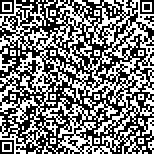| This paper reviews the theories, methods and application of feeding ecology of fish, and dicusses the following aspects (1) stomach contents analysis, (2) trophic niche and diet overlap, (3) food chains and food webs, (4) trophic levels, (5) criteria for principal and secondary prey taxa of fish community (6) relationships between feeding behavior and the morphological characteristics of the digestive organs (7) effects of ecological and physiological factors on the feeding selectivity of fish.
A new measure, diet dominance index (Dj). is put forward to determine the contribution of a prey to the diets of a fish community of similar feeding behavior:
Dj = (∑Pij)fj / max{(∑Pij)fj}
where Pij is the percent weight of prey j in the diet of predator i; fj is the frequency occurrence of prey j, expressed as the number of predators in whose diets prey j appears. The diet dominance index for each prey was calculated and used to classify the prey into principal prey (Dj>0.5), secondary prey (0.5>Dj>0.1) and rare prey (Dj<0.1).
Based on the point methods by former authors, a formula for trophic level of fish is suggested for discussion:
T = 1+∑(TiPi) / 100
where T is the trophic level of the predaton; Ti is the trophic level of prey i. Trophic levels of photoplankton and herbivorous zooplankton are 1.0 and 2.0, respectively. Trophic levels of other carnivorous predators are estimated by the new method. Pi is the points of prey i, estimated from its contribution to the stomach contents of the predator.
Other indices such as overlap index Q, percent similarity index PSI, diversity index H, evenness index J, Simpson index S and lvlev index I are also applied to the study on the feeding ecology of fish, which is fully discussed in this paper. |
